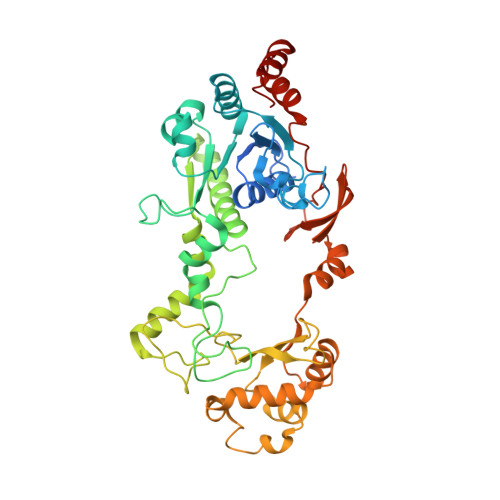Formyl-coenzyme A (CoA): Oxalate CoA-transferase from the acidophile Acetobacter aceti has a distinctive electrostatic surface and inherent acid stability.
Mullins, E.A., Starks, C.M., Francois, J.A., Sael, L., Kihara, D., Kappock, T.J.(2012) Protein Sci 21: 686-696
- PubMed: 22374910
- DOI: https://doi.org/10.1002/pro.2054
- Primary Citation of Related Structures:
3UBM - PubMed Abstract:
Bacterial formyl-CoA:oxalate CoA-transferase (FCOCT) and oxalyl-CoA decarboxylase work in tandem to perform a proton-consuming decarboxylation that has been suggested to have a role in generalized acid resistance. FCOCT is the product of uctB in the acidophilic acetic acid bacterium Acetobacter aceti. As expected for an acid-resistance factor, UctB remains folded at the low pH values encountered in the A. aceti cytoplasm. A comparison of crystal structures of FCOCTs and related proteins revealed few features in UctB that would distinguish it from nonacidophilic proteins and thereby account for its acid stability properties, other than a strikingly featureless electrostatic surface. The apparently neutral surface is a result of a "speckled" charge decoration, in which charged surface residues are surrounded by compensating charges but do not form salt bridges. A quantitative comparison among orthologs identified a pattern of residue substitution in UctB that may be a consequence of selection for protein stability by constant exposure to acetic acid. We suggest that this surface charge pattern, which is a distinctive feature of A. aceti proteins, creates a stabilizing electrostatic network without stiffening the protein or compromising protein-solvent interactions.
Organizational Affiliation:
Department of Biochemistry, Purdue University, West Lafayette, Indiana 47907, USA.















